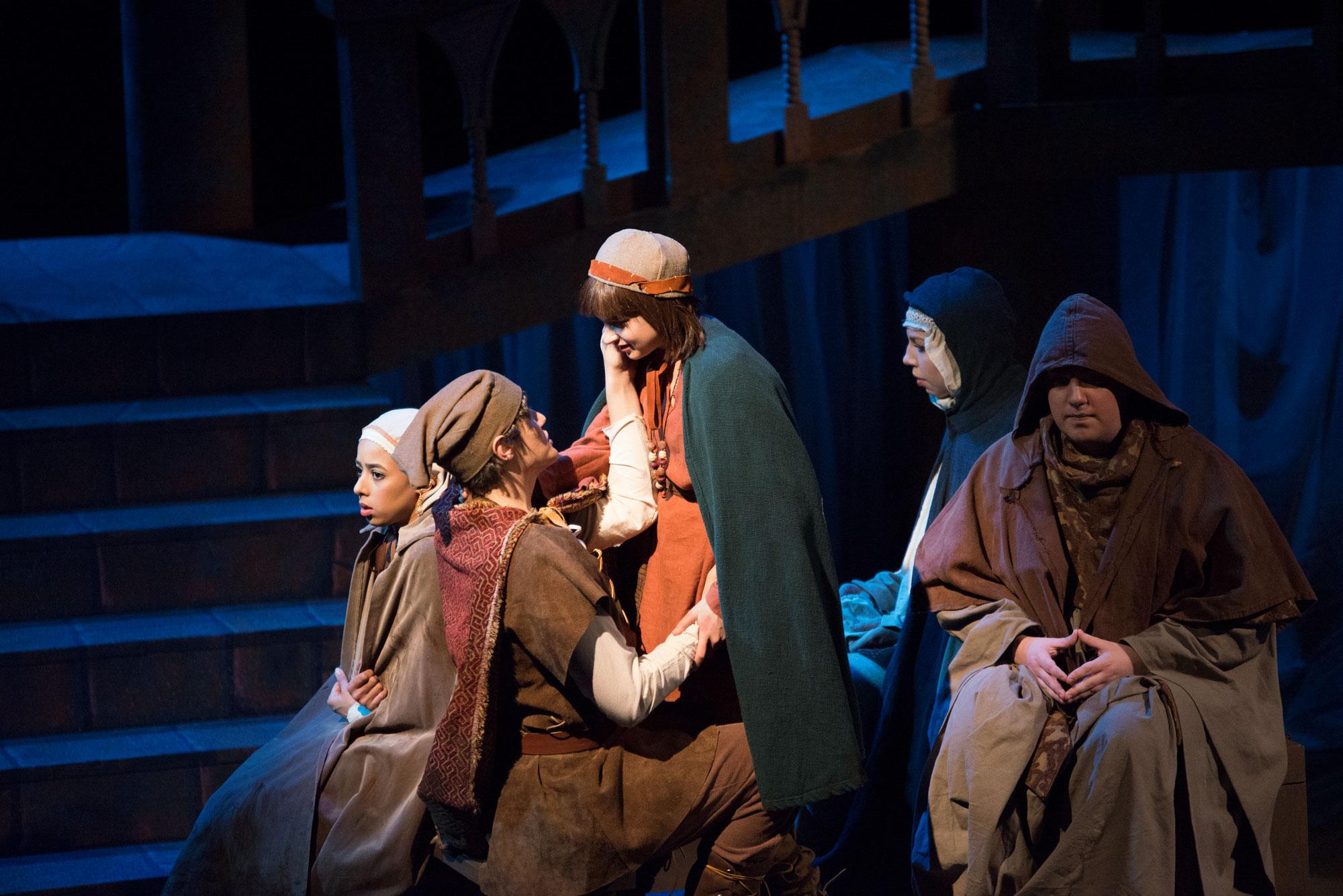
A crazed King stood upon a castle tower and held one hand to a sword as red light projected the backdrop. “Silence,” directed by Paulette Marty, mixed early Middle-Ages England with black comedy, vomit and feminism. The Valborg Theater hosted the play Feb. 22-26, including a Sunday matinee.
Before the play had been put to stage, there was an expedited six-week rehearsal with the full cast while other had more time to prepare.
Alexxa Guerrero, a senior theatre major who played the character Ymma, which was modeled after Emma of Normandy, read the script a year ahead and even studied abroad to England in preparation for the role. While in exchange, she studied both Viking culture and medieval England with hopes of creating a performance that felt natural although she had no guarantee of landing her role.
Although the play took place in medieval England, the cast said they hoped its message would resonate well with the current 2017 socio-political climate. The play thematically tinkered with gender identity, the agency of being a woman and the lack of societal voice.
Within the play, Silence is the name of a young teenage girl, played by senior theatre major L.A. Pavlacka, who had been persistently told she was a boy from the time of birth. This creates complications when she is married off to Ymma and is unable to consummate the marriage due to obvious limitations.

Silence is accompanied by a priest named Roger who is played by senior theatre major Dylan Brown. Brown radiantly accomplished his role, leaving the audience in a catharsis of laughter time and time again. Interjecting conversations and uncomfortable situations with a flare of comedy that is only furthered by his performance, Brown both creates and saves the comedic nature of the advertised black comedy.
While Brown captured the comedy, Aaron Scotch, a senior theater major, stole the show with a stellar rendering of the antagonist Ethelred, the crazed king. Scotch creates madness in a performance that captivated, riveted and left the audience wanting more. Scotch’s monologues in an indiscernible tone created the face of power, madness and insanity that energized the audience.
The play followed Silence discovering herself, both sexually and societally, and seemed to create a feminist message only to fall short with a relatively discouraging ending. Ymma is married to the antagonist, crazed King, but the audience is told in privacy that Silence and Ymma continue to see each other at night.
The character of Ymma unbelievably conforms to her setting at the end of the play which contrasts the relentless standoff nature Guerrero displayed in her performance altogether. Without any previous sign of weakness or conformity, the audience is expected to believe she is entirely fine with throwing away all independence Ymma had seemed to gain during the adventure that undergoes during the play. From an inundated performance and follies in the script, the ending is left feeling unanswered, rushed and mostly unbelievable.

Contemporary linguistics distinguished itself from the setting of medieval England and was modeled on familiar vernacular. The stylistic choice helped keep the audience engaged with the story in fears that an authentic dialect would distance the cast from the spectators.
Scenery, projection and lighting design was implemented by theatre professor Mike Helms and was complemented with costume and makeup by theatre professor Sue Williams.
Music and sound composition and performance followed by adjunct instructor of percussion and African music, Shawn Roberts. While the show had its fair share of exceptionality, the music between scenes seemed to distract from the play – sometimes at crucial times holding back the performance altogether.
While the implementation of melodic transitions is necessary to establish setting and mood, the scene transitions in “Silence” prematurely killed off many dramatic and comedic moments. The crowd would be suspended in mid laughter by a soundtrack that hardly complemented the performance.
Despite several shortcomings, Thursday’s performance was left with a standing ovation from a little over half the audience, confirming the performance as a success.
Story by: Shaun Howell, A&E Reporter
Photos by: Matt Sloyer, Staff Photographer

